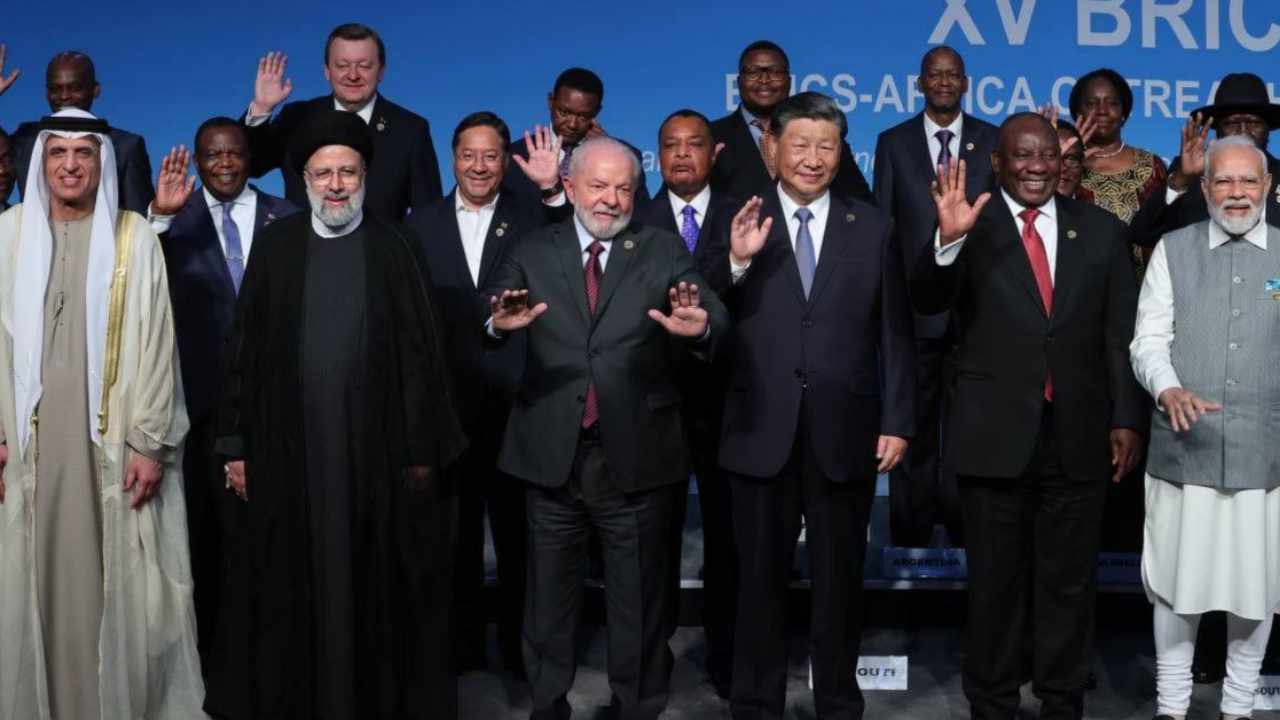
Роль БРИКС Плюс в развитии транзитных коридоров и их влияние на мировую торговлю
БРИКС Плюс, включающий новых членов — Иран, Египет, ОАЭ, Саудовскую Аравию и Эфиопию, стал важным игроком в международной логистике и транспортировке. Контролируя ключевые транзитные маршруты, такие как Суэцкий канал и Ормузский пролив, и развивая международные коридоры, такие как Север-Юг, БРИКС Плюс переопределяет глобальные торговые потоки. Эта статья рассматривает роль группы в развитии транзитной инфраструктуры, ее влияние на мировую торговлю и стоящие перед ней вызовы.

Значение транзитных коридоров в мировой торговле
Транзитные коридоры, такие как китайская инициатива «Пояс и путь» или коридор Север-Юг, служат важными артериями для мировой торговли. Эти маршруты обеспечивают эффективное и экономически выгодное перемещение товаров между континентами. БРИКС Плюс, с участниками, стратегически расположенными в ключевых географических регионах, обладает значительным потенциалом для улучшения этих коридоров. Например, контроль Египта над Суэцким каналом, доступ Ирана к Персидскому заливу и Каспийскому морю, а также ключевые атлантические порты Бразилии предоставляют стратегические преимущества для развития глобальной логистики.
Роль Ирана в транзитных коридорах
Иран, как новый член БРИКС, играет центральную роль в развитии транзитных коридоров. Его географическое положение как моста между Азией, Европой и Ближним Востоком способствует интеграции торговых маршрутов Восток-Запад и Север-Юг. Коридор Север-Юг, простирающийся от Индии до России через Иран, является флагманским проектом для БРИКС Плюс. Этот коридор может значительно сократить время и стоимость транспортировки между Индией и Россией, способствуя увеличению торговли между этими странами.
Кроме того, развитие Ираном портов, таких как Чабахар, обеспечивает доступ к Индийскому океану, служа воротами для индийских и китайских товаров на рынки Ближнего Востока и Европы. Расширяющаяся железнодорожная инфраструктура Ирана, входящая в железнодорожную сеть БРИКС протяженностью 382 000 километров, дополнительно увеличивает транспортные возможности группы.
Логистическое сотрудничество БРИКС Плюс
БРИКС Плюс сосредоточен на развитии транспортной инфраструктуры для повышения своей глобальной конкурентоспособности. Например, предложение России создать зерновую биржу БРИКС может стабилизировать цены и стимулировать торговлю зерном внутри группы. В 2023 году страны БРИКС произвели 1,17 миллиарда тонн зерна, что составило 42% мирового производства. С добавлением новых членов этот показатель вырос до 1,24 миллиарда тонн.
Кроме того, БРИКС Плюс работает над созданием сети транспортных маршрутов, независимых от путей, контролируемых Западом. Это особенно важно в условиях западных санкций, которые нарушили традиционные торговые маршруты. Например, санкции на нефть против России и Ирана подтолкнули эти страны к развитию альтернативных транзитных коридоров.
Логистические вызовы
Несмотря на свой потенциал, БРИКС Плюс сталкивается с логистическими вызовами. Некоторые страны-участницы, такие как Эфиопия, не имеют достаточной портовой инфраструктуры, несмотря на стратегическое расположение в районе Африканского Рога. Кроме того, политические и экономические напряженности, особенно между Китаем и Индией, могут препятствовать логистическому сотрудничеству. Внешние давления, такие как угрозы тарифов США в 2025 году, также могут отпугнуть инвестиции в транзитные проекты со стороны некоторых членов.
Влияние на мировую торговлю
Развитие транзитных коридоров БРИКС Плюс может изменить динамику мировой торговли. Снижая зависимость от маршрутов, контролируемых Западом, таких как Панамский канал или Малаккский пролив, БРИКС Плюс может перенаправить торговые потоки на альтернативные пути. Это не только стимулирует торговлю внутри группы, но и дает развивающимся странам возможность играть более активную роль в мировой коммерции.
Кроме того, развитие транзитных коридоров может привлечь иностранные инвестиции. Например, китайские инвестиции в порт Чабахар в Иране и проекты Суэцкого канала в Египте могут повысить торговые возможности этих стран. Такие инвестиции также создают рабочие места и укрепляют местные экономики.
Заключение
БРИКС Плюс позиционирует себя как лидера в мировой торговле, сосредоточив внимание на транзитных коридорах и логистической инфраструктуре. Роли Ирана, Египта и других новых членов имеют решающее значение в этом процессе, но успех зависит от преодоления внутренних и внешних вызовов. Продолжая двигаться в этом направлении, БРИКС Плюс может стать мощной альтернативой торговой системе, доминируемой Западом.
Источник: Eghtesad Moaser — Укрепление интересов и прав развивающихся экономик
